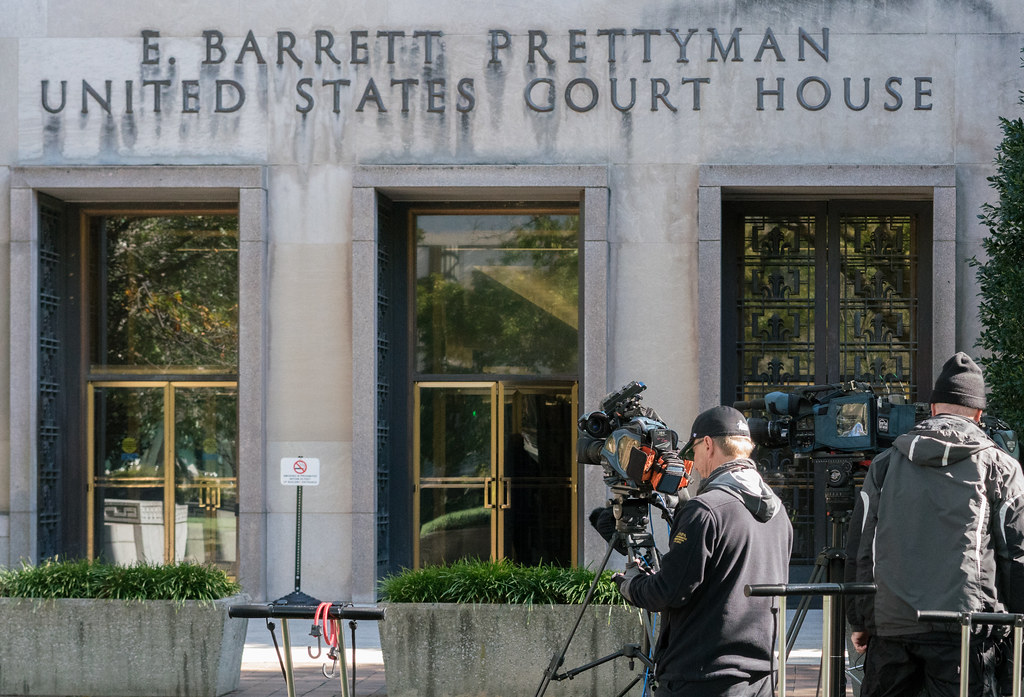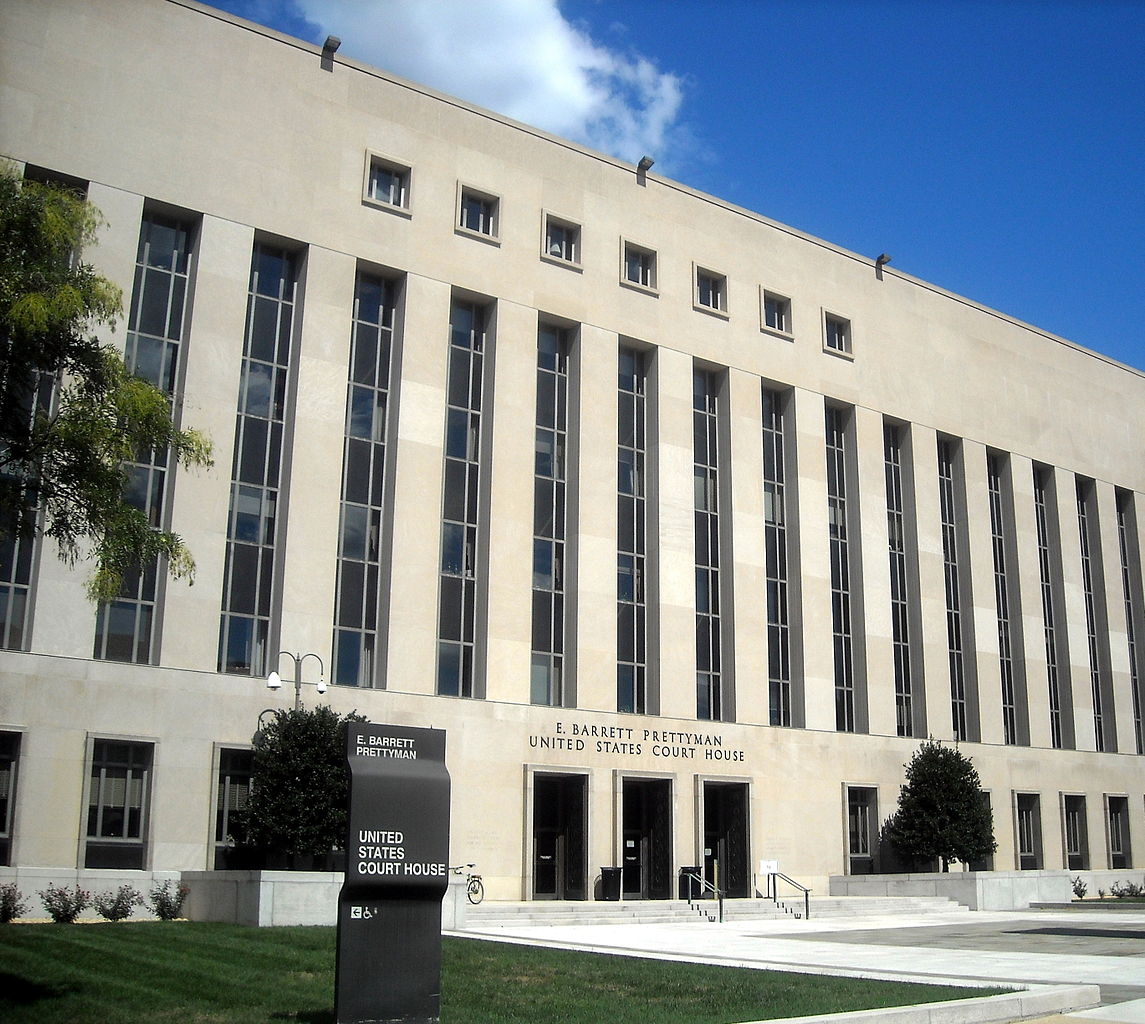The Shoddy History Behind a Key Precedent in the Flynn Case
The Justice Department argues that Rule 48(a) of the Federal Rules of Criminal Procedure gives the judge in Michael Flynn’s case little leeway in dismissing the case against him. New research shows that the history behind this argument is wrong.

Published by The Lawfare Institute
in Cooperation With

When U.S. District Judge Emmet G. Sullivan’s appointed amicus filed a brief on June 10 opposing the government’s shocking recent request to dismiss the prosecution of former National Security Adviser Michael Flynn, its conclusions were in most respects anticipated.
The amicus—former U.S. District Judge John Gleeson, who is also a former U.S. attorney for the Eastern District of New York—found that the Justice Department’s stated grounds for dropping Flynn’s case were “pretextual,” “riddled with inexplicable and elementary errors of law and fact,” and “taxe[d] the credulity of the credulous” (a line borrowed from the late Justice Antonin Scalia). He then concluded:
[T]he instant the Executive Branch filed a criminal charge against Flynn, it forfeited the right to implicate this Court in the dismissal of that charge simply because Flynn is a friend and political ally of the President. Avoiding precisely that unseemly outcome is why Rule 48(a) requires “leave of court.”
But that last line—about the purpose of Federal Rule of Criminal Procedure 48(a), which dictates that prosecutors can dismiss a prosecution only “with leave of court”—would have been quite unexpected just a month ago. Rule 48(a) had been widely understood to have a narrower use and goal—one that would not apply in the Flynn case.
What changed in the interim? Harvard Law School fellow and lecturer Thomas Frampton swiftly wrote up a highly persuasive article about the history of that rule, which was just published in the Stanford Law Review Online the same day that Gleeson’s brief was filed. Frampton concludes that the conventional reading of Rule 48(a) “is simply wrong.” Gleeson refers to Frampton’s article four times in his brief and devotes three pages of it to recounting Frampton’s key historical findings.
The meaning of Rule 48(a) was an arcane topic five weeks ago. But on May 7, when Attorney General William Barr’s Justice Department abruptly moved to dismiss false-statement charges against Flynn—after Flynn had already pleaded guilty (twice)—the issue rocketed to a new prominence.
The conventional reading of Rule 48(a) stems from dicta in a 1977 U.S. Supreme Court case called Rinaldi v. United States. In a footnote, the unsigned majority opinion states: “The principal object of the ‘leave of court’ requirement is apparently to protect a defendant against prosecutorial harassment” (emphasis added). Such harassment might occur, for instance, if the prosecution were dismissing a poorly prepared case with the intent of reviving the charges later, when it was better prepared—circumventing the defendant’s right to a speedy trial.
The implication was that when a defendant joined the government in seeking dismissal—as in Flynn’s case—the judge had virtually no discretion. And indeed, the Justice Department cited the Rinaldi footnote in its motion to dismiss Flynn’s case, arguing that Sullivan had no option but to grant the motion.
But the footnote is mistaken, according to Frampton. In fact, he writes, the
‘principal object’ of Rule 48(a)’s ‘leave of court’ requirement was not to protect the interests of individual defendants, but rather to guard against dubious dismissals of criminal cases that would benefit powerful and well-connected defendants. In other words, it was drafted and enacted precisely to deal with the situation that has arisen in United States v. Flynn: Its purpose was to empower a district judge to halt a dismissal where the court suspects some impropriety has prompted prosecutors’ attempt to abandon a case.
Before getting into how the Supreme Court could have gotten it so wrong, let’s step back to remember how the dispute unfolded. Back in December 2017—and then, again, in December 2018—Flynn pleaded guilty to having made false statements to FBI agents about his conversations with Russian ambassador Sergey Kislyak during the presidential transition in December 2016. He also admitted having filed false Foreign Agents Registration Act documents, in which he lied about work he’d done for the Republic of Turkey. (In exchange for pleading guilty to one count, the government agreed not to bring additional charges.)
In December 2018, Flynn was due to be sentenced when Sullivan intimated that Flynn might have to do jail time. Flynn then asked to postpone sentencing until he finished testifying for the government in a case involving a former business partner.
Then the world turned upside down. In February 2019, Barr—a longtime critic of Special Counsel Robert Mueller’s probe into Russian interference in the 2016 election—became U.S. attorney general. The first warning sign for the Flynn prosecution came that May, when Barr minimized and distorted the special counsel’s findings after the release of Mueller’s report. When Mueller closed his office, the Flynn prosecution—commenced by Mueller—was transferred to the U.S. attorney for Washington, D.C.
A month later, Flynn fired his respected attorneys at the century-old firm of Covington & Burling and hired Sidney Powell, an outspoken advocate of conservative political causes. (President Trump cheered the switch in a tweet.) Then, in October 2019, Barr launched an extraordinary meta-probe—an inquiry into the Mueller inquiry, led by U.S. Attorney for the District of Connecticut John Durham.
Next, in January 2020, a trio of events set the table for the attempted Flynn dismissal. First, Barr instructed Jeffrey Jensen, the U.S. attorney for the Eastern District of Missouri, to “review” Flynn’s case. Second, Flynn’s new attorney, Powell, moved to withdraw Flynn’s guilty plea and dismiss his case, alleging “egregious misconduct.” Third, Barr replaced the Senate-confirmed U.S. attorney for the District of Columbia with an interim head, Timothy Shea, who had previously been a senior counselor in Barr’s office.
All this came to a head on May 7. Brandon Van Grack, the lead prosecutor who had been handling Flynn’s case from inception, abruptly quit the case and—a few hours later, Shea moved to dismiss it, under Rule 48(a). The motion—signed by Shea alone, without signatures from any career attorneys in the Justice Department—claimed that “newly discovered” evidence showed that Flynn’s statements to the FBI, “even if untrue,” had not been legally “material” because they were “untethered to” a “justifiably predicated” FBI investigation.
Shea’s reasoning was hugely controversial. But the threshold question before Sullivan is not whether Shea’s argument was correct, but just whether the courts are empowered to second-guess that argument. (Shea has since been promoted to acting head of the Drug Enforcement Administration, but, for simplicity, I’ll continue to refer to the motion Shea signed as “Shea’s.”)
Although Sullivan has not even ruled on Shea’s motion yet, the judge’s conduct has already been challenged in the appeals court by Flynn’s counsel—simply because Sullivan started to treat Shea’s Rule 48(a) motion like any other motion. The judge set a briefing schedule, so that he’d be fully informed on the pertinent facts and law. Because the prosecutor and Flynn are now on the same side, Sullivan appointed an amicus—Gleeson—to oppose their motions. That way he would have the benefit of “adversarial briefing”—the sine qua non of Anglo-American jurisprudence. Oral argument was set for July 16.
But then Flynn’s attorney, Powell, rushed to the U.S. Court of Appeals for the D.C. Circuit, arguing that Sullivan had already overstepped his authority. Citing local precedents that followed the Rinaldi footnote, she argued that Sullivan had no discretion to second-guess Shea’s decision to dismiss. Even trying to fully inform himself before ruling was beyond Sullivan’s power, she argued in her petition for a writ of mandamus. She wanted an order forcing Sullivan to dismiss without further ado. Barr’s Justice Department is supporting her request. (Argument before the appeals court will take place Friday, June 12, at 9:30 a.m.)
Frampton got involved, he says in an interview, when he was reading Shea’s motion to dismiss. He tripped over the Rinaldi reference as soon as he read it, he recalls. He was familiar with another scholar’s work on the history of the Federal Rules of Criminal Procedure, and the footnote sounded historically inaccurate to him.
“I immediately dove into the archives to see what I could learn,” recounts Frampton, who will become an associate professor at the University of Virginia Law School this summer.
The Federal Rules of Criminal Procedure—like the corresponding set of civil rules—are forms of legislation. Congress passes a law authorizing the Supreme Court to write rules. The court then appoints an advisory committee to come up with drafts. After much back-and-forth and commentary, the court approves a version and sends it back to Congress. If Congress fails to act within a set period, the rules become law. For the criminal rules, the process began in 1941 and was completed in 1944.
Prior to these rules, Frampton’s article explains, federal prosecutors enjoyed complete control over whether to dismiss charges. In contrast, state prosecutors often had less leeway. Many states permitted them to dismiss cases only “with leave of court.”
Federal judges had “bristled” over their lack of any say in these matters, Frampton writes, because “it made them feel complicit in dealings they deemed corrupt.” In a Montana case from 1924, for instance, a judge had written a bitter opinion lamenting how a prosecutor’s decision to drop a case against a well-born defendant smacked of “some variety of prestige and influence (family, friends, or money) that too often enables their possessors to violate the laws with impunity.”
In reviewing the history of the rule-making process, Frampton found plenty of lively debate over the “leave of court” clause. While concerns about favoritism, undue influence, and corruption came up frequently on the advisory committee, “only one member made comments that (even arguably) connected the ‘leave of court’ requirement to the interests of the accused; the discussion quickly moved on.” Similarly, when the draft rules were circulated more broadly throughout the legal community, “the plight of the defendant never registered as a concern.”
During the process, the Supreme Court itself weighed in periodically, too. It repeatedly voiced skepticism with drafts that had omitted a “leave of court” provision, expressing concern once about the court’s need to perform its independent “judicial function.” (Though Frampton wanted to research the individual justices’ perspectives on Rule 48(a) at the time, he was unable to do so, he explains, because the Library of Congress—where their papers are housed—is currently closed due to the coronavirus pandemic.)
How, then, did the Rinaldi court get it so wrong in 1977? The answer, it turns out, is also relevant to the Flynn case.
“Rinaldi was decided without oral arguments and without any sort of adversarial briefing,” Frampton explains. Rinaldi’s lawyers had raised a problem with his conviction, and the government, considering Rinaldi to be right, simply conceded error. The Supreme Court then swiftly dismissed, without asking for briefing on precisely how Rule 48(a) came to be. Three justices dissented from the summary dismissal: Chief Justice Warren Burger, Justice Byron White and Justice William Rehnquist.
Now that Frampton’s law review article sets the record straight on Rule 48(a), will that resolve Flynn’s case? Obviously, no. Lurking behind Rule 48(a)—regardless of what its drafters had in mind—are weighty constitutional questions about separation of powers. Everyone agrees that the initial decision about whether to bring criminal charges is solely up to the executive branch. Similarly, everyone agrees that sentencing decisions are up to the judiciary. Flynn’s case—where the defendant has already been charged, has already pleaded guilty and was due to be sentenced—falls into a murky area somewhere in between.
Finally, there is one last issue that may be the most important factor of all. Even assuming, for the sake of argument, that the prosecutor has the ultimate power to decide whether to dismiss Flynn’s case, the question remains: Which prosecutor? The Justice Department is not just seeking dismissal, but dismissal with prejudice. That would mean that no subsequent attorney general could ever take a fresh look at Flynn’s case, the way Barr himself did.
As Barr recently observed, “History is written by the winners.” On Election Day, the country could get a new set of winners. And if Trump loses reelection and Flynn’s case is not dismissed before Inauguration Day, the Justice Department under President Joe Biden could reverse position and continue to pursue Flynn’s prosecution.
This may be why Powell rushed into court to short-circuit Sullivan’s leisurely briefing schedule. She needs to finalize Flynn’s dismissal as soon as possible. In the end, this isn’t just about the Federal Rules or the Constitution. It’s about the election—and how Flynn is racing against the clock.





